
Orchestra Baobab Tour Dates and Upcoming Concerts
Welcome to the official artist page for Orchestra Baobab – your premier destination for
the latest concert tickets, tour announcements, and exclusive shows near you. Dive into
the music, explore the artist’s reviews and photos, and never miss another concert
moment. Stay updated, stay connected, and be the first to grab tickets for an
unforgettable musical experience.
On tour
Yes
Followers
39,551
Category
African, Afro-cuban, International, Senegal
About Orchestra Baobab
Orchestre Baobab is a Senegalese band formed 1970 in Dakar, Senegal as a multi-ethnic, multi-national club band.
Put together by saxophonist Baro N'Diaye, original members included singers Balla Sidibe, Rudy Gomis, and Laye Mboup; guitarists Barthelemy Attisso and Latfi Ben Geloune; bassist Charlie N’Diaye; drummer Mountaga Koite; and saxophonist Issa Cissokho. Ndiouga Dieng and Medoune Diallo sometimes sat in with the band, and personnel changed frequently. Later, singer Thione Seck and his younger brother Mapenda Seck joined the band.
The group played an Afro-Cuban-Caribbean fusion. Unlike other Senegalese bands, they added Casamance harmonies and drumming (from southern Senegal), melodies from Togo and Morocco to the more common Wolof (from northern Senegal) influences. They recorded 20 vinyl albums between 1970 and 1985. In 1982, they released possibly their most famous album, Pirates Choice to much critical acclaim. This legendary session was re-released in a double CD format with 6 extra rare tracks, and the second disc is regarded as arguably better than the first.[citation needed] Competition from mbalax, a new sound in the mid 1980s, overwhelmed Orchestre Baobab. By 1987, the band had broken up.
Reissues of their old recordings in Europe led to the reformation of the band in 2001. Orchestre Baobab toured Europe and made a new recording with guest appearances by Cuban superstar Ibrahim Ferrer and Senegalese star Youssou N'dour.
In 2002 Orchestra Baobab released Specialist in All Styles which was produced by Youssou N'dour.
Orchestra Baobab gained attention from American media in 2003 when musicians Trey Anastasio and Dave Matthews filmed a documentary named Trey and Dave go to Africa which aired on VH1. The two visit Senegal and perform with Orchestra Baobab during the program.
Orchestre Baobab performed at Live 8 in Johannesburg, a series of concerts to end poverty.
--------------------------------------------------------
Official World Circuit Biography
Senegal is a country with a rich musical heritage and one of the most vibrant pop music scenes on the African continent. Its music today is dominated by one main sound – the breathtaking rhythms of mbalax, the music of the Wolof people in the north of the country. But it was not always so. In the 1970s the style that filled Senegal’s airwaves was a fusion of Afro-Cuban elements with various local sounds drawn from Senegal’s diverse cultural traditions. And the undisputed masters of this fusion were the legendary Orchestra Baobab. Baobab exploded onto the Dakar scene in 1970 and immediately became the top local band, famous for their sublime and sophisticated arrangements, lyrical vocals and dazzling guitar solos. For a decade they reigned supreme, recruiting some of the finest musicians from around the country, especially the south – as well as from further afield in West Africa, making them one of Senegal’s most cosmopolitan and versatile bands. There were two qualities that set them apart from most other groups of the period. One was their approach to the Cuban sound, which went far beyond mere imitation. They actually created their own deliciously mellow Cuban-style rhythms in a uniquely Baobab way. Second, while other bands were fusing the Latin tinge with Wolof melodies, this was only one of the regional styles that Baobab drew upon. More important for them were the rolling harmonies and intensely melodic drumming traditions of Casamance (in southern Senegal), where several of the band members had grown up. The combination of Casamance plus Cuba created something completely new and entrancing that was to become Baobab’s trademark. Their hauntingly beautiful, and rocking songs such as “Utrus horas”, “On verra ça , “Autorail”, “Sutukun” and “Coumba” became all-time great hits in West Africa. They recorded more than 20 albums (on LP format) between 1970 and 1985, several of which re-appeared from time to time on bootleg LPs and cassette - as was all too often the case in those days. Fortunately for Baobab, however, the UK label World Circuit released (in 1989) a much acclaimed album, aptly titled “Pirates’ Choice”, with some tracks the group had first recorded in 1982, opening with the sultry piece “Utrus horas”. With this, Orchestra Baobab were launched around the world. DJs snapped up the album. Among connoisseurs of West African music, it achieved almost cult status. But too late - the band had already split up… for the time being, at least…
THE HISTORY…. The band was founded in 1970 to animate a new elegant night club just opened in central Dakar, around the corner from the Place de l’Independence and not far from Senegal’s National Assembly. It was meant to be a meeting place for politicians, intelligentsia and wealthy businessmen, so the band needed to have a certain chic. The club owners poached six musicians from their famous rivals, the resident Star Band (later to launch Youssou NDour) of the Miami Club. These included the two singers Balla Sidibe and Rudy Gomis, both from Casamance, and the brilliant self-taught guitarist Barthelemy Attisso from Togo. Attiso, who had moved to Dakar to study law, had initially taken up music just as a night job to finance his studies, but it was soon clear that he had a phenomenal talent. In addition to these three musicians (all of whom are back in the re-formed band) they recruited the charismatic Wolof griot singer Laye Mboup with his soaring Wolof griot vocals. Other musicians included Latfi Ben Geloune, of Moroccan origin, on rhythm guitar, Charlie N’Diaye, from Casamance, on bass, Mountaga Koite, a Maninka griot from eastern Senegal, on drums, and Issa Cissokho, also a Maninka griot originally from Mali, on saxophone. The club called itself Baobab, and so did the newly formed band. And under the circumstances, it turned out to be an uncannily appropriate name. The baobab is one of the most emblematic and majestic trees of the African savannah. It is slow growing and enduring; it lives many hundreds of years, and it is considered sacred – and therefore is not used for carving or for firewood. [If you cut it down it will always grow back, unless you burn the roots for days on end.] It’s said that in pre colonial days, griots used to be buried in the hollow of the giant, grey, gnarled baobab trunk. Perhaps they infused the tree with the spirit of music. The early 70s were years of optimism and economic growth in Senegal, and there was a flourishing nightclub scene with dozens of bands. The country had gained its independence in 1960 and under the leadership of its first president, the poet Leopold Sedar Senghor, culture was high on the political agenda. Senghor championed his philosophy of negritude – a celebration of the African character, in which music played an important role. It had to be both modern – to suit the mood of independence – and rooted in local traditions, to mark the identity of the new nation-state. Baobab fit the agenda perfectly and people flocked to the club to hear them. The young group were an instant success. Their first recordings were huge local hits, like the minor-key ballad “Ni Diaye”. In those early days the band was tending towards a strongly Wolof sound, thanks to the vocals of Laye Mboup – ten years ahead of the trend, before Youssou NDour and others made it truly fashionable. Tragically, however, Mboup died in a car crash in 1974. The band began moving in new directions. Balla Sidibe and Rudy Gomis, both from non-griot backgrounds, took over as lead vocalists along with Wolof griot Ndiouga Dieng, while other well-known singers such as Thione Seck (whose superb vocals on the Baobab song “Bamba” are a perennial classic) and Medoune Diallo were brought in on an ad hoc basis. The Wolof element continued as one of their strands, with songs like “Bul Ma Miin”, while Diallo was the most intensely Cuban-sounding of the singers, with a true sonero voice, even singing in Spanish on such songs as “El son te llama”. But it was Sidibe and Gomis who introduced the sounds of their native Casamance, with all its sensuality and hint of melancholy.
CASAMANCE and the 1980s…
Casamance is a very different sonic world to that of Dakar, reflected in its more tropical climate and lush vegetation, and its different ethnicities and languages, each with their own musical styles: Jola, Manjak, Mandinka, Balanta, and Portuguese-Creole, among others. Sidibe and Gomis had been brought up amidst the tuned drum ensembles of the Jola, the dancing balafons of the Balanta, the high-energy gumbe drums of the Creole, the swinging and punchy strumming of the Mandinka kora. Their songs evoked these traditions with subtlety and grace, with a series of hits such as “On verra ça”, danced to at clubs and parties up and down the country through the late 70s. The sounds of Casamance were diverse in themselves and diversity became the trademark of Baobab. The cement that held all this together was the crystal-clear guitar of Attisso, who fearlessly runs the entire fretboard, sometimes in chords, sometimes in brilliant solo lines, always with staggering precision and musicality. He composed and arranged for the band, giving their music structure and pace. Above all, he gave them groove. Few other West African bands can match Baobab for their sheer groove. But by the early 80s times were changing and there was a definite mood swing in Senegal. In 1981 a new president, Abdou Diouf was inaugurated and there was a new sound in the nightclubs, the sound of Wolof mbalax. Suits and ties were being abandoned for boubous, and Cuban rhythms and pachanga were exchanged for adaptations of the sabar street dances. Youssou Nour was the young rising star, and he introduced the frenetic sabar and tama drums into his band, together with rap, and influences from jazz and soul. The Baobab club had closed down in 1979 and the band had moved on to new locations. But their mellow style was overtaken by the craze for mbalax and they found themselves with dwindling audiences. To make matters worse, fighting had broken out in Casamance. There was a new political movement that advocated Casamance’s cessation from Senegal, and as it gathered momentum there was intense guerrilla warfare in the region. Rudy Gomis’s haunting song “Utrus Horas”, recorded in 1982, with its angular minor-key melody and boding lyrics, turned out to be a grim prophesy of war - much to his distress, since he later lost several family members in the fighting. One by one, members of the band left, either to form their own groups, or in the case of guitarist extraordinaire Barthelemy Attisso, to return to his native Togo and take up his original profession as lawyer. He put down his guitar and didn’t touch it for fifteen years. By 1987 the band had completely broken up – or so it seemed….
THE BAND REGROUPS – and records a NEW ALBUM…..
In 2001 Nick Gold, director of World Circuit, decided to reissue once again the album Pirate’s Choice, this time with some previously unreleased material from the same 1982 sessions. Baobab had unwittingly played an important role in the fortunes of World Circuit. It was Baobab’s mellow arrangements of Cuba’s dance rhythms that had first inspired Gold to research Cuban music, leading eventually to the most successful ever world music album, the Buena Vista Social Club. Gold was already collaborating with Youssou Ndour on several other Senegalese projects and so he enlisted NDour’s support for an Orchestra Baobab reunion concert. NDour supported the idea wholeheartedly. As a young singer he had greatly admired Baobab and he felt the time was right to re-introduce them to Senegalese audiences. “They had such a clean sound, and they were pan-African. We’re ready for this to come back. We’ve put up barriers in our music,” he comments, referring to the current trend for an almost entirely Wolof sound at the expense of Senegal’s other musical traditions, “and we have to bring the barriers down. All the young kids, they understand now just how important those years, the 70s, were for their music, so they’re ready to listen”. It didn’t take much persuasion to get the core members of Baobab back together again for a reunion concert at London’s Barbican Centre in May 2001. Attisso dug his guitar out of the cupboard in Togo, went to Dakar and began working around the clock to recapture his technique. Balla Sidibe and Rudy Gomis had remained in touch, and sounded like they had never been apart. Thierno Koite, sax player and brother of drummer Mountaga, ex-Super Etoile, was enlisted. Balla Sidibe, Rudy Gomis, and Ndiouga Dieng, the original singers, were joined by a fourth singer, the young Wolof griot Assane Mboup, with his inspirational high-pitched voice sounding uncannily like that of the late Laye Mboup. And though Baobab hadn’t played together for all those years, they proved that they were still one of the great live bands of West Africa. Their music sounds as powerful as ever, a refreshing take on Senegal’s cultural diversity, driven by the mesmerising solos of Attisso, who must be rated as one of Africa’s finest guitarists. In November 2001 Baobab, by now in tip-top form after a successful autumn tour of Europe, recorded an entirely new album in the Livingston Studios in north London. Recorded by Jerry Boys, and produced by Nick Gold and Youssou Ndour, it has a totally live feel. Specialist In All Styles includes some stunning new material, like the song “Ndongoy daara” by Assane Mboup, as well as some old favourites, among them the enchanting “On verra ça”, with sumptuous vocals from Balla Sidibe. Attisso redoes his warm-hearted Cuban dance track “Gnawoe” (“That’s right”) sung in his own language, Mina, with an inimitable guitar solo. The album, released in September 2002, includes several special guests. Issa Cissokho joins Thierno Koite, to provide full-blooded and explosive saxophones. Medoune Diallo sings a new version of the gorgeous Cuban number “El son te llama”. And for a retake of the ballad “Hommage a Tonton Ferrer”, they’re joined by none other than Cuban super-star Ibrahim Ferrer as well as Youssou N’Dour himself. Specialist In All Styles was met with near universal critical acclaim, respected world music magazine Songlines perfectly summed it up with, ‘A truly tremendous album by a group making a truly tremendous comeback.’ The success of the album culminated in Orchestra Baobab winning two awards at the BBC Radio 3 Awards for World Music 2003. Baobab are the only band to have won two awards, picking up both the Africa category and Critics Award for Album of the Year; the group played live at the awards ceremony and confirmed why they are the only band to have scooped two awards. Baobab toured throughout the world in 2003, crisscrossing continents bringing their uplifting live show to a new generation of fans. The band ended the year in spectacular fashion, in December they joined an illustrious line-up of acts from around the globe to perform at the Nobel Peace Prize Concert on Oslo, Norway, and were widely reported as being a major highlight of the show. This co-incided with the announcement that Specialist In All Styles had been nominated for a Grammy, the album featured in the Best Contemporary World Music category. The award has previously been won by Ali Farka Toure & Ry Cooder’s ‘Talking Timbuktu’ album in 1994, also released on World Circuit.
THE FUTURE……
One of the hardest working bands in music, Orchestra Baobab show no signs of slowing down. Back on the road, Baobab’s touring in 2004 saw them return to Europe, Asia and North America, where they have become a huge success on the concert circuit. Baobab’s status in the US skyrocketed in with a VH-1 special featuring stadium rockers Dave Matthews and Trey Anastassio visiting the and in Dakar coupled with a performance on the Late Night with David Letterman show.
2005 saw Baobab return to Europe and the US, and the group also played at the African concert in Johannesburg of the worldwide music-charity extravaganza Live 8. Winter 2006 sees Baobab prepare to ,ake their long awaited return to the studio to record a new album for World Circuit.
And so the ancient tree breaths a renewed spirit back into Senegalese music – with some of the most sublime dance grooves of West Africa.
Written by Lucy Duran. Updated by Dave McGuire.
In 2006, Baobab released two new albums called Classic Titles: Orchestre Baobab and African Nights: Orchestre Baobab. Classic Titles featured older songs such as "Diarabi" and "Tante Marie." African Nights will be released on November 21,2006.
Follow on Bandsintown
Genres
African, Afro-cuban, International, Senegal
Similar Artists On Tour

Tinariwen
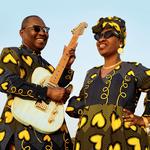
Amadou & Mariam

Khruangbin
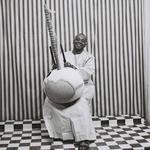
Toumani Diabate
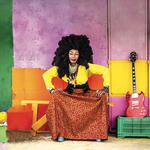
FATOUMATA DIAWARA

Salif Keita
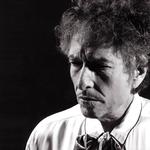
Bob Dylan

Vieux Farka Touré

So Percussion

yMusic
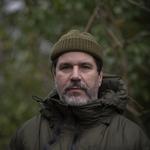
Quantic
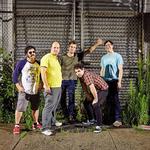
Oneida
Orchestra Baobab Tour Cities
Frequently Asked Questions About Orchestra Baobab
Concerts & Tour Date Information
Is Orchestra Baobab on tour?
Yes, Orchestra Baobab is currently on tour. If you’re interested in attending an upcoming
Orchestra Baobab concert, make sure to grab your tickets in advance. The Orchestra Baobab tour
is scheduled for 2 dates across 2 cities. Get
information on all upcoming tour dates and tickets for 2025-2026 with Hypebot.
How many upcoming tour dates is Orchestra Baobab scheduled to play?
Orchestra Baobab is scheduled to play 2 shows between 2025-2026. Buy
concert tickets to a nearby show through Hypebot.
When does the Orchestra Baobab tour start?
Orchestra Baobab’s tour starts Jan 31, 2026 and ends on Oct 03, 2026.
They will play 2 cities; their most recent concert was held in
Dardilly at L'Aqueduc and their next upcoming concert
will be in Rouen at Le 106.
What venues is Orchestra Baobab performing at?
As part of the Orchestra Baobab tour, Orchestra Baobab is scheduled to play across the following
venues and cities:
2026 Tour Dates:
Jan 31 - Dardilly,
France @ L'Aqueduc
Oct 03 - Rouen,
Normandie @ Le 106